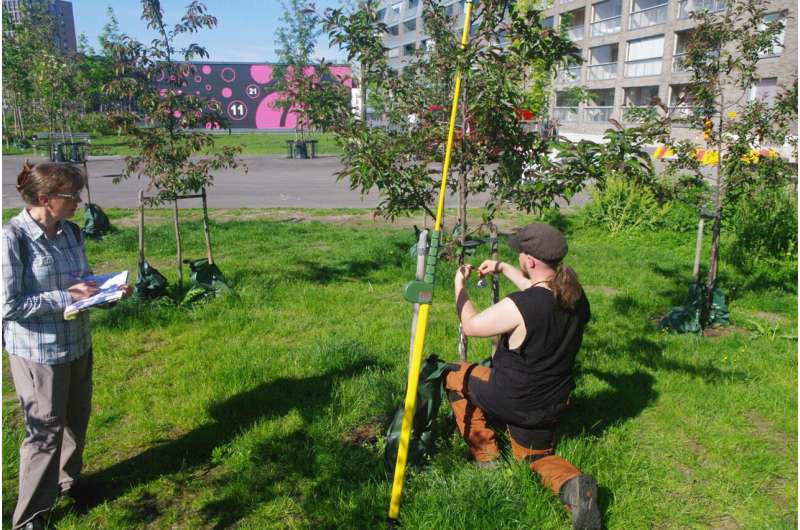A new carbon neutrality policy brief for municipalities world wide

How to design efficient demo areas for urban carbon sequestration? In the latest policy brief research groups from the University of Helsinki and Aalto University focus on the main principles of urban demonstration areas using biochars for carbon sequestration.
Furthermore, the policy brief provides lessons learnt from a co-creation process of one such park, Hyväntoivonpuisto, in Helsinki, Finland.
In order to achieve the goals of carbon neutrality within next 20 years, municipalities worldwide need to increasingly apply negative emission technologies. Long-term negative carbon emissions technologies, such as biochars, will be increasingly important in future as the biomass carbon is fixed there for hundreds to thousands of years. This results from the high amount of aromatic carbon forms in biochar occurring from heating the otherwise quickly-degradable biomass in oxygen-free conditions. The biomass, e.g. urban greenwaste chips, that is heated without oxygen in temperatures around 500 °C, will be much harder for the microbes to degrade than if the same biomass would be added to soil directly.
The joint research team led by Professor Mikko Jalas at the Aalto University with the AgriChar team, led by Adj. Professor Priit Tammeorg at the University of Helsinki found that the demonstration sites of urban carbon sinks in public parks must be safe, visible and scientifically sound for reliable and cost-effective verification of carbon sequestration.
"The policy brief shows also that different interests can be arbitrated and synergy that emerges from co-creation of urban carbon sink parks between stakeholders i.e. scientists, city officials, companies, and citizens, can result in demo areas with maximized potential for impact, dissemination and consideration of principles of scientific experimentation," says lead-author of the policy brief Priit Tammeorg from the AgriChar research group from the University of Helsinki.
Tammeorg continues: "Raising public awareness of the carbon sequestration is one of the key objectives of the urban carbon sink parks. The parks themselves, no matter how well planned, will have only a very limited capacity to absorb carbon—thus, it is highly important to inspire people to carry out their own actions elsewhere—in private gardens or summer cottages. We hope these guidelines will help cities worldwide to get inspired!"
The research was published in Frontiers in Environmental Science.
No comments:
Post a Comment